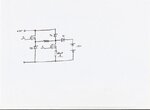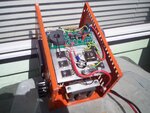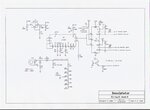kathmandu
Full Member level 5
Hello,
I need to recover two of my lead-acid batteries (from a large battery bank). They seem to be affected by sulfation (some spongy white deposits on top of the plates).
Usually, this "desease" is caused by insufficient charge or deep discharge but it wasn't the case anyway (the rest of the batteries are OK).
Nevermind, I've read about some desulfator circuits that might help. It's all about applying some short high current pulses during a long period (24-48h) to break down those sulfate crystals.
The problem is I didn't find any informations about those pulse patterns; I've read about using fixed or variable frequency (in 10khz - 100khz range), 50% pwm ratio or much smaller and so on.
Does anyone have any experience with that? The batteries are just 1.5 years old and I don't want to loose them (though I can't explain what really happened).
The two batteries were connected in series (I have a 24V battery bank) and I've noticed few days ago that they were bubbling hard (even at very low charge currents).
Btw, they are rated at 225A and the maximum charge current is 15A.
I need to recover two of my lead-acid batteries (from a large battery bank). They seem to be affected by sulfation (some spongy white deposits on top of the plates).
Usually, this "desease" is caused by insufficient charge or deep discharge but it wasn't the case anyway (the rest of the batteries are OK).
Nevermind, I've read about some desulfator circuits that might help. It's all about applying some short high current pulses during a long period (24-48h) to break down those sulfate crystals.
The problem is I didn't find any informations about those pulse patterns; I've read about using fixed or variable frequency (in 10khz - 100khz range), 50% pwm ratio or much smaller and so on.
Does anyone have any experience with that? The batteries are just 1.5 years old and I don't want to loose them (though I can't explain what really happened).
The two batteries were connected in series (I have a 24V battery bank) and I've noticed few days ago that they were bubbling hard (even at very low charge currents).
Btw, they are rated at 225A and the maximum charge current is 15A.


